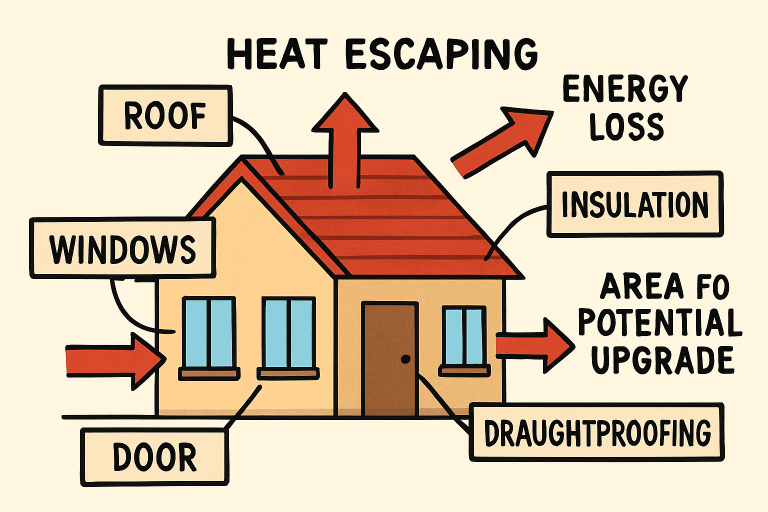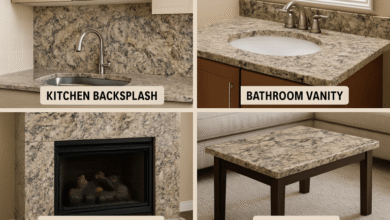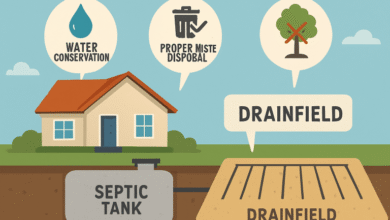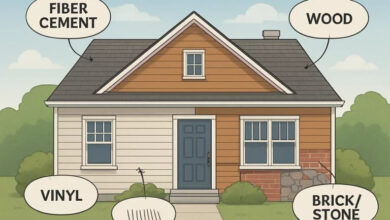Assessing Your Home’s Energy Use for Long-Term Savings

Understanding your home’s energy consumption and making strategic improvements is one of the most effective ways to reduce utility costs and lower your environmental footprint.
In Kansas City and beyond, homeowners can unlock substantial savings and make their homes more comfortable by starting with a thorough home energy audit. Such an assessment identifies energy drains and opportunities for improvement—providing a roadmap for both immediate and long-term savings.
Whether you’re looking to save on bills, boost property value, or shrink your carbon footprint, proactively optimizing your home’s energy performance yields lasting benefits. This guide explains the key steps and upgrades on the journey to a more energy-efficient home.
Table of Contents
Importance of Energy Assessment
Regular energy assessments serve as the foundation for smart home improvements. By examining your home’s current energy usage, such as through an energy efficiency assessment for homes in Kansas City you can discover where energy is being wasted, often through poorly sealed ductwork, insufficient insulation or outdated appliances. Identifying these inefficiencies is essential in prioritizing upgrades that provide the best return on investment and comfort.
Conducting a Home Energy Audit
An in-depth home energy audit is typically performed by a certified professional who evaluates every aspect affecting your home’s energy use. This includes inspecting the insulation in attics and walls, testing window and door seals, assessing the heating and cooling systems, and using diagnostic equipment to uncover hidden leaks or inefficiencies.
Many local utilities and government agencies provide resources or rebates for professional energy audits, making it a smart first step for any homeowner committed to reducing energy costs.
Upgrading Insulation and Sealing Air Leaks
Once an energy audit reveals areas of weakness, the next step is to improve insulation and seal air leaks to address these issues. Adding insulation in attics, crawl spaces, and exterior walls creates a thermal barrier, helping your home maintain stable temperatures throughout the year.
Sealing-cracks and gaps around windows, doors, and especially HVAC ductwork with caulk or weatherstripping will minimize air exchange with the outdoors. According to the U.S. Department of Energy, addressing drafts and upgrading insulation can reduce heating and cooling costs by up to 20%.
These improvements not only reduce your energy-bills but also enhance your overall comfort living spaces more comfortable throughout the year. Over time, the investment pays for itself by enhancing your home’s overall energy efficiency and reducing strain on your HVAC system.
Installing Energy-Efficient Windows and Doors
Older windows and doors are common culprits for energy loss. Switching to double- or triple-pane windows filled with insulating gas, or installing well-insulated exterior doors, will greatly reduce heat transfer and stop drafts.
This not only lowers energy bills but also enhances indoor comfort by eliminating cold spots and reducing exterior noise. Many modern energy-efficient windows also feature specialized coatings that block ultraviolet rays, protecting interiors from sun damage and enhancing efficiency.
Adopting Energy-Efficient Appliances
Replacing outdated kitchen and laundry appliances with models bearing the ENERGY STAR® label ensures lower energy and water consumption. These appliances are independently certified and rigorously tested to perform better while using less power.
For instance, modern refrigerators, washing machines, and dishwashers can reduce annual energy use by 10–50% compared to older models, resulting in significant savings over the appliance’s lifespan.
Implementing Smart Home Technologies
Smart home devices, such as programmable-thermostats, advanced lighting systems, and power strips, make it easier to control and monitor energy use on a daily basis. A smart thermo-stat can learn your schedule and adjust heating and cooling automatically, only running when truly necessary.
Similarly, smart lighting enables custom schedules and remote control through apps, reducing wasted electricity. Homeowners adopting these technologies often see a rapid return on investment and increased convenience.
Exploring Renewable Energy Options
To maximize long-term energy savings and independence, consider integrating renewable energy-solutions such as rooftop solar panels. The cost of residential solar installations continues to decline, and numerous state and federal incentives help make the transition more affordable.
Solar panels can fulfill a significant portion of a typical home’s electricity needs, dramatically reducing monthly bills and even allowing some homeowners to sell excess power back to the grid.
See also: 5 Financing Tips for First-Time Homebuyers
Benefits of Energy Efficiency
Embracing energy efficiency is an investment that brings both tangible and intangible returns. Lowering utility bills provides immediate savings, while increased property value and greater comfort enhance day-to-day living.
According to the EPA’s overview of local energy efficiency benefits and opportunities, energy-efficient homes are also more resilient to weather extremes and power outages. Additionally, by reducing demand for fossil-fuel-based power, every homeowner contributes to creating a more sustainable and environmentally friendly future.
By systematically assessing and improving your home’s energy use, you safeguard your household against rising energy prices, contribute to a healthier planet, and enjoy a more comfortable, cost-effective living environment year after year.



